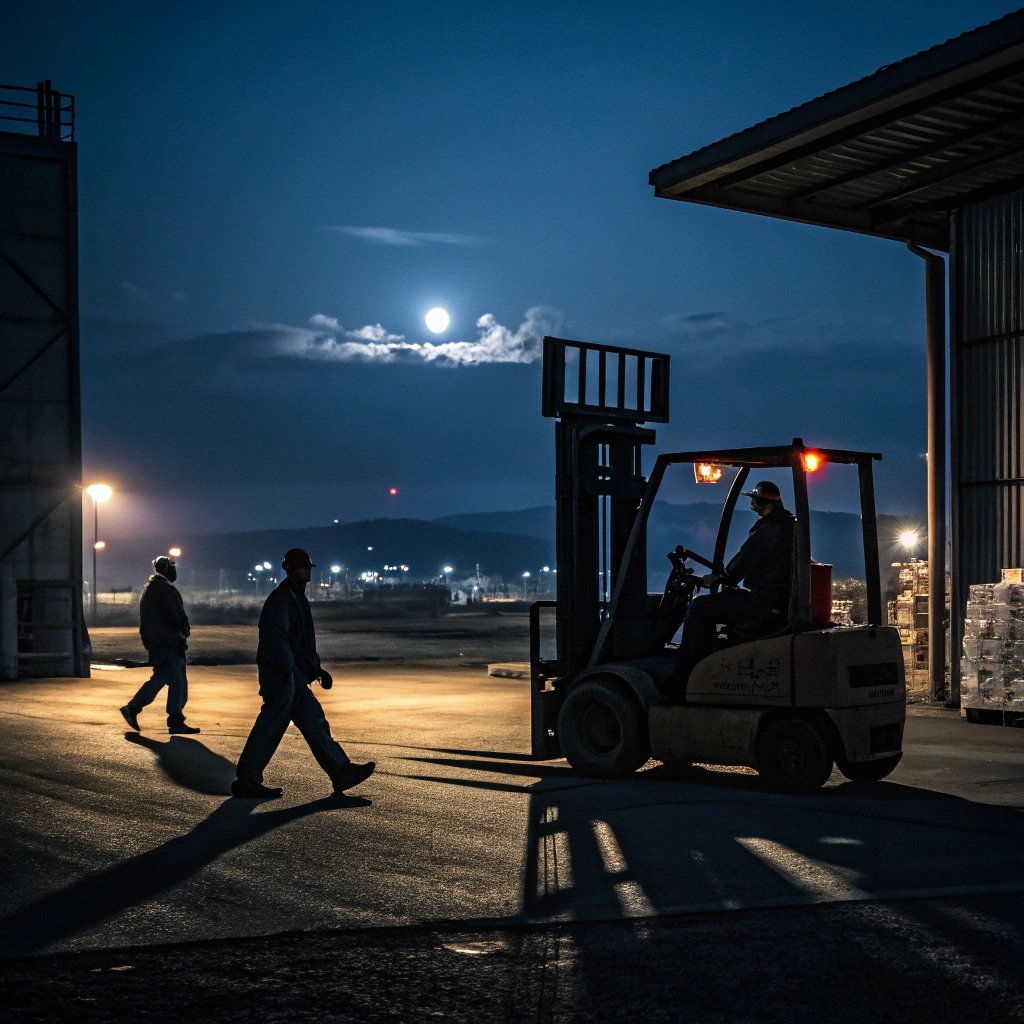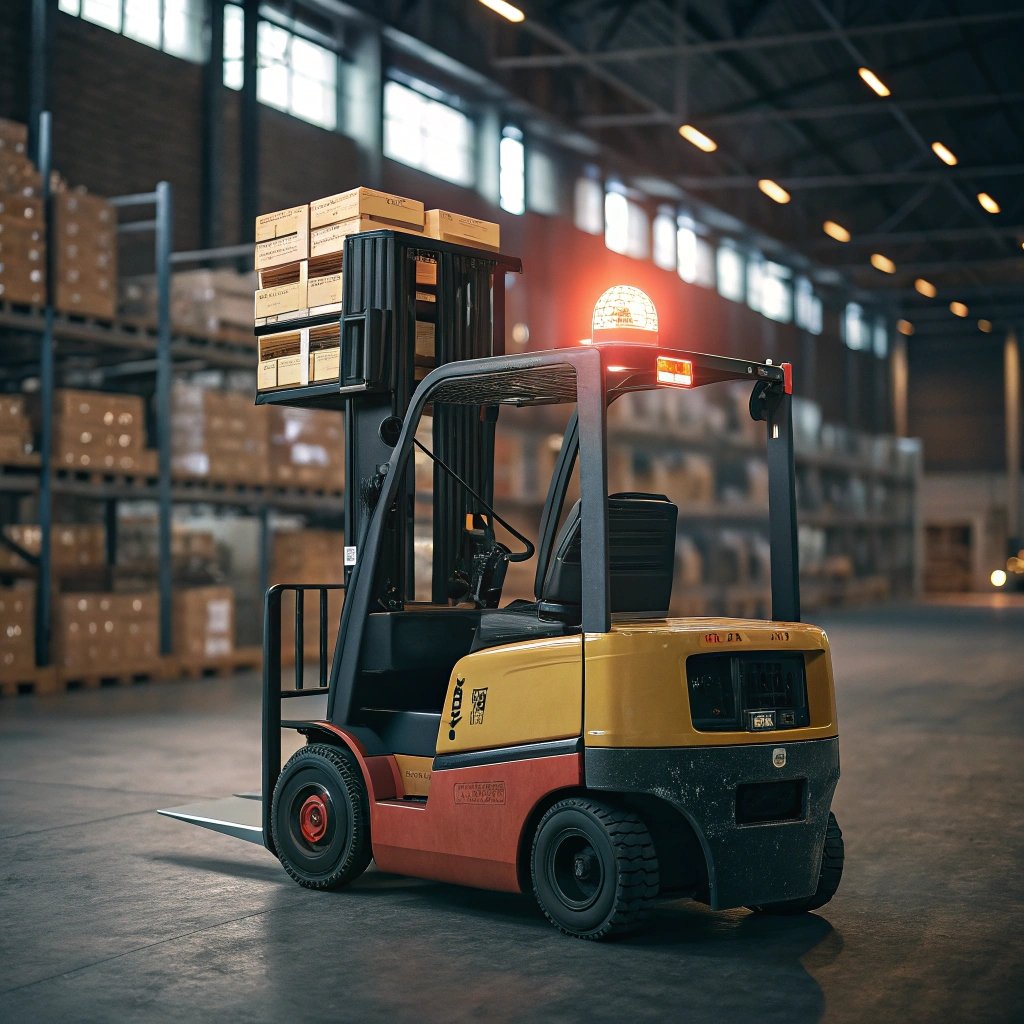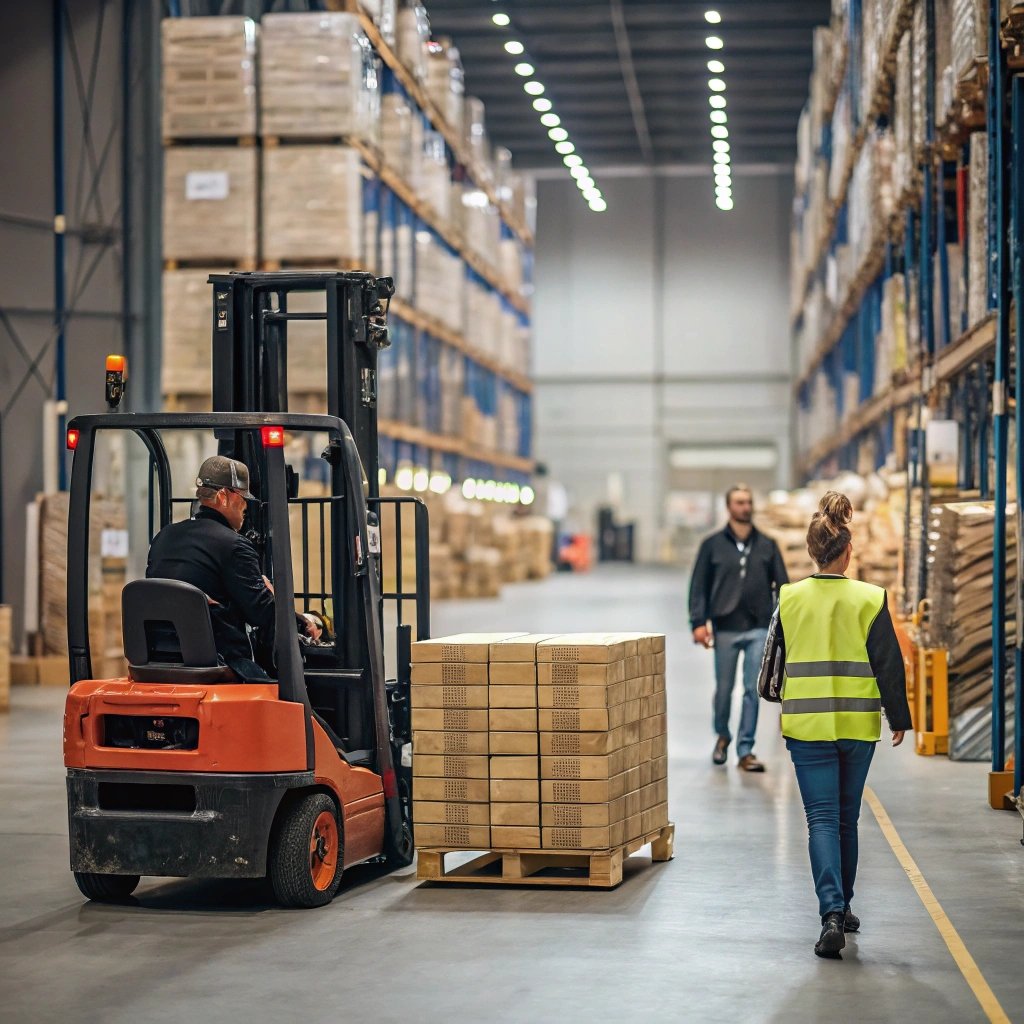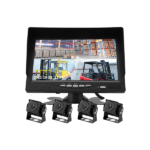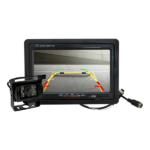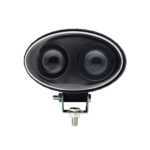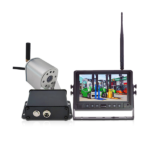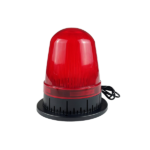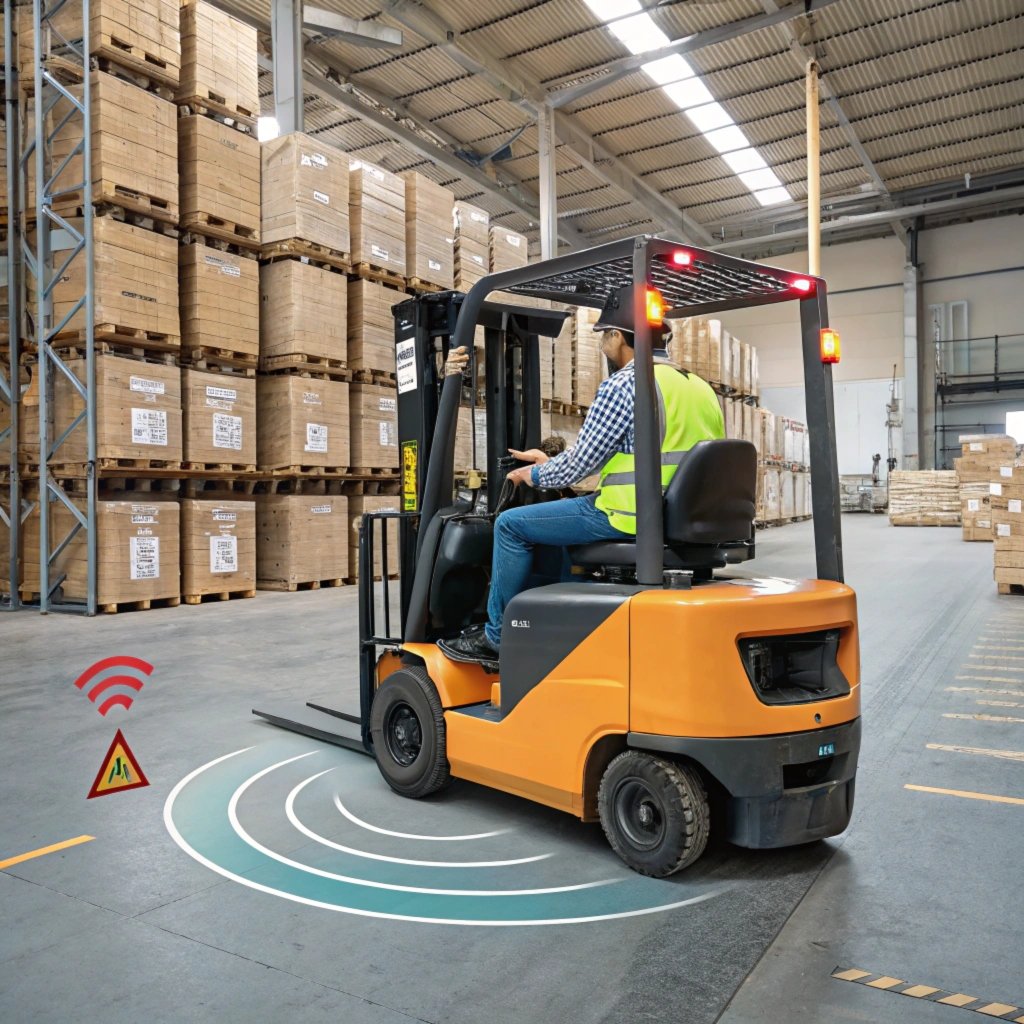Table of Contents
KEY TAKEAWAY
Operating a forklift may seem like a routine job in industrial and warehouse settings, but it’s a critical role that requires attention to detail, responsibility, and safety awareness. Did you know that forklifts are involved in about 85 fatalities and 34,900 serious injuries annually in the U.S.? These accidents are preventable, and following proper forklift safety tips is essential to creating a safer work environment.
Whether you’re a seasoned forklift operator or new to the role, it’s crucial to understand how to operate forklifts safely to prevent accidents and protect both yourself and your colleagues. In this article, we’ll go over the key forklift safety tips to help you improve operational efficiency while keeping safety at the forefront. Let’s dive in!
Why Forklift Safety Matters
Forklifts are indispensable in modern warehouses and factories, but they also present significant risks. According to the Occupational Safety and Health Administration (OSHA), forklifts are involved in approximately 25% of all warehouse accidents. This makes forklift safety not just a guideline but a necessity for workplace safety.
- Statistics on forklift accidents and injuries: Every year, forklifts are responsible for a large portion of workplace injuries. Injuries can range from minor cuts and bruises to severe accidents that can lead to permanent disabilities or even fatalities.
- The financial and emotional toll of workplace accidents: Beyond physical harm, forklift accidents can result in significant financial losses, including workers’ compensation claims, legal costs, and the loss of productivity.
- Legal implications of neglecting forklift safety: Failure to comply with forklift safety regulations can lead to OSHA fines, lawsuits, and reputational damage.
By adopting a safety-first approach, you can help mitigate these risks, ensuring a safer and more productive workplace.
Pre-Operation Checklist for Forklifts
Before operating a forklift, it’s essential to conduct a thorough inspection to ensure that it’s in proper working condition. A pre-operation checklist is a simple yet effective way to avoid mechanical failures or safety issues that could lead to accidents.
- Inspecting forklifts for visible damages: Check for any obvious signs of damage to the forklift, including broken lights, bent forks, or worn-out tires.
- Checking tire pressure, fluid levels, and brakes: Ensure that the tires are properly inflated and that the hydraulic fluid, oil, and other essential fluids are at their correct levels. The brakes should also be tested for proper functionality.
- Ensuring the forklift’s safety equipment is functional: Verify that safety features such as seatbelts, horns, backup alarms, and warning lights are working correctly.
A quick and thorough inspection can prevent issues that might compromise safety later on during operations.
Proper Forklift Operation Techniques
Once your forklift passes the pre-operation checklist, it’s time to focus on safe operation. Proper operating techniques are crucial to maintaining both safety and efficiency.
- Maintaining clear visibility and situational awareness: Always ensure you have a clear line of sight when operating the forklift, especially when moving heavy loads. If your view is obstructed, drive in reverse or use a spotter to guide you.
- Operating at safe speeds and using the horn in blind spots: Avoid speeding. Slow and steady wins the safety race! Always use the horn when approaching corners, blind spots, or intersections to alert pedestrians and other operators of your presence.
- Avoiding sharp turns or sudden stops to maintain load stability: Abrupt maneuvers can cause the load to shift or fall, leading to accidents. Always take turns slowly and avoid sudden stops when carrying a load.
By maintaining safe operating practices, you ensure a safer work environment for both yourself and your colleagues.
Load Handling Best Practices
Handling loads properly is one of the most critical aspects of forklift safety. Improper loading can lead to accidents such as tipping or spilling.
- How to correctly balance and secure loads: Always ensure the load is properly balanced and centered on the forks. Use appropriate securing methods, such as straps or nets, to keep the load stable.
- Understanding the forklift’s load capacity and center of gravity: Never exceed the forklift’s rated load capacity. Exceeding the limit can cause tipping, even if the forklift is stationary.
- Steps to avoid tipping or spilling loads: When lifting a load, make sure the forks are as low as possible, and avoid lifting the load too high, which can cause it to tip over.
By following these guidelines, you can reduce the risk of accidents related to load handling.
Common Forklift Hazards and How to Avoid Them
Forklift operators must be aware of the various hazards present in their work environment. Recognizing these hazards and knowing how to avoid them can make a significant difference in accident prevention.
- Preventing collisions with workers or obstacles: Forklift operators should always be aware of their surroundings, especially when operating in high-traffic areas. Pedestrian walkways should be clear, and workers should wear high-visibility clothing. A cutting edge technology AI powered pedestrian detection system is a priority to arm in the forklift.
- Managing slippery surfaces and uneven terrain: Slippery floors or uneven surfaces can cause forklifts to lose traction, leading to accidents. Ensure that floors are cleaned regularly, and operators are trained to navigate challenging terrains.
- Handling hazardous materials safely: When moving hazardous materials, always follow OSHA’s guidelines for safe handling and transport. Use proper containers and ensure the load is secured to prevent spills.
By identifying potential hazards and taking proactive measures, you can create a safer work environment.
Forklift Safety in the Workplace
Creating a safe forklift operation environment requires more than just training and equipment—it also requires careful planning and management.
- Establishing pedestrian walkways and forklift zones: Clear separation between forklift paths and pedestrian zones is crucial. Mark designated areas for forklifts to reduce the risk of accidents involving workers.
- Using safety signs, mirrors, and barriers: Install safety mirrors, warning signs, and physical barriers to improve visibility and prevent collisions.
- Conducting regular safety drills and training sessions: Forklift safety training should be an ongoing process. Regular drills can help reinforce safety procedures and ensure everyone is aware of potential hazards.
These strategies can significantly reduce the likelihood of accidents in the workplace.
Maintenance Tips to Keep Forklifts Safe
Regular maintenance is essential to keeping forklifts in safe working order. Well-maintained forklifts are less likely to experience mechanical issues that could lead to accidents.
- Importance of routine maintenance and servicing: Implement a routine maintenance schedule, including regular checks for brake functionality, tire wear, and hydraulic system health.
- Recognizing warning signs that equipment needs repair: Pay attention to unusual sounds, vibrations, or performance issues. These could be indicators that the forklift needs repairs.
- The role of certified technicians in forklift maintenance: Always have certified technicians perform major repairs to ensure that the forklift is operating at optimal safety levels.
Proper maintenance not only extends the lifespan of the forklift but also ensures its safe operation.
Training and Certification for Forklift Operators
Proper training is the cornerstone of forklift safety. A well-trained operator is far less likely to be involved in an accident.
- OSHA requirements for forklift certification: According to OSHA, all forklift operators must be certified before operating a forklift. Certification requires both theoretical knowledge and practical training.
- Benefits of refresher training for experienced operators: Even experienced operators benefit from refresher courses. These courses can address new regulations, emerging technologies, and best practices.
- Resources and programs for learning forklift safety: There are a variety of online and in-person forklift training programs that can help operators stay up-to-date with safety standards.
Investing in training ensures that operators are both knowledgeable and confident in their abilities.
Conclusion
Forklift safety isn’t just about following a set of rules—it’s about creating a culture of safety that prioritizes the well-being of everyone in the workplace. By adhering to these forklift safety tips, you can reduce accidents, boost productivity, and ensure compliance with safety regulations. Start by reviewing your current safety protocols, ensuring all operators are properly trained, and keeping your equipment well-maintained. Let’s work together to make forklift operation in 2025 safer than ever!
More Articles
Please check the following for more articles.


